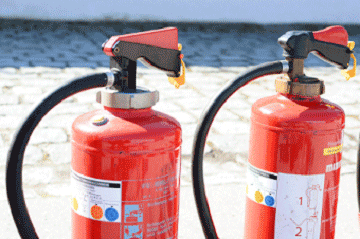October is Fire Preparedness Month. We count on fire extinguishers to help us put out small fires, but would yours be ready if you needed them today? Would you know how to use an extinguisher effectively?
Extinguisher Types
Choose extinguishers that match the hazards of your operation. For most organizations, an ABC extinguisher is best because it extinguishes ordinary combustibles like paper (Class A), flammable liquids (Class B) and fires in live electrical equipment (Class C). Specialized extinguisher types are also available for combustible metals (Class D) and commercial cooking fires (Class K).
Extinguisher Placement
Extinguishers should be mounted on the wall in highly visible locations throughout your facility. Post a sign to make sure they can be identified from a distance.
Regular Inspections
Inspect your fire extinguishers monthly to make sure they are in the correct location, aren’t blocked or hidden and appear to be in good working condition.
Training
Start by training your employees to immediately call 911 and evacuate the area if they discover a fire. If you decide to allow employees to fight early stage fires (as opposed to a policy requiring all employees to evacuate and wait for emergency responders), they should be trained annually in fire extinguisher use.
PASS Technique
Using the PASS technique can help you use a fire extinguisher more effectively.
Pull the pin.
Aim low, pointing the extinguisher’s nozzle at the base of the flames.
Squeeze the handle to release the extinguishing agent.
Sweep from side to side at the base of the fire until it appears to be out.
Find More Online
Fire Prevention safety program template from EMC Insurance
How to Use a Portable Fire Extinguisher (Video)
